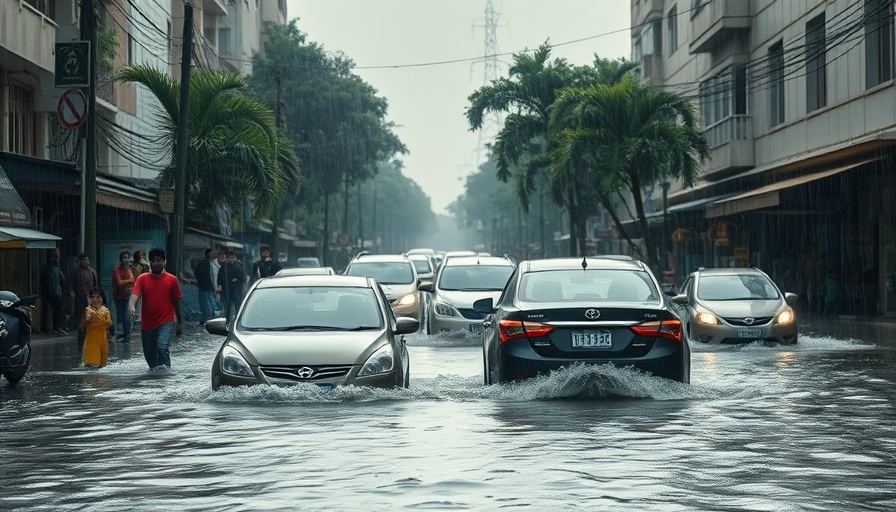
Heavy Rainfall Warning for Southern Africa: A Critical Alert
As the Southern African Development Community (SADC) gears up for potentially catastrophic weather, the Humanitarian and Emergency Operations Centre (SHOC) has issued a yellow category alert, warning of heavy rainfall across several countries. Issued on February 24, 2025, this advisory is a crucial step towards preparedness as it remains valid until March 3, 2025, affecting a broad swath of Southern Africa including Botswana, Angola, Zambia, and South Africa among others.
The Impact of Flooding: Human and Environmental Consequences
The potential flooding from this expected deluge is significant. Reports from Zambia highlight the stark reality of this situation, where flooding has reportedly washed away graves, exposing human remains. Such visceral instances not only punctuate the urgency of the rainfall warning but also raise broader questions about the infrastructure and disaster preparedness in these regions.
Communities Respond: Preparations and Risks
In light of the advisory, communities in high-risk areas are encouraged to remain vigilant. The SHOC has specified that low-lying areas, landslide-prone mountain regions, and regions near rivers and streams are particularly at risk. This advisory resonates with previous warning signs where more than 30 lives were lost in similar weather conditions earlier this season, underlining a dire need for prevention measures.
Global Perspectives on Regional Climate Challenges
The warning from the SADC is not merely a local concern but reflects a global crisis as climate change continues to manifest in unpredictable weather patterns. This weather phenomenon serves as a reminder that the impacts of global warming have far-reaching effects, influencing not just regional food security but also international stability. Countries that are ill-equipped to manage such disasters are left vulnerable, exacerbating existing socio-economic challenges.
Lessons in Disaster Preparedness
Moreover, there's an overarching need for regional cooperation in disaster readiness. The SHOC is tasked with coordinating regional disaster risk preparedness and response, yet collaborative measures and investment in resilient infrastructure are necessary. Countries must utilize technology and data analytics to formulate predictions of weather patterns, pioneer developments in agriculture to adapt their practices, and implement early warning systems to mitigate impacts before they escalate.
Future Predictions and Opportunities for Innovation
As Southern Africa braces for heavy rain, it also opens the door to a conversation on the intersection of technology and climate preparedness. How can advancements in AI, machine learning, and data analytics enhance the region's ability to respond to such crises? As countries adopt smart city technologies, they can also cultivate robust public safety networks to anticipate and manage natural disasters better, ultimately fostering more resilient communities.
Conclusion: Call to Action
In conclusion, the challenges posed by impending heavy rainfall in Southern Africa highlight the urgency for both immediate action and long-term strategy. Executives and decision-makers are beckoned to engage in discussions and investments that enhance regional disaster preparedness and technology adoption. It's vital to consider how your organization can contribute to ameliorating these challenges, fostering resilience through digital innovation. Prepare your communities, invest in sustainable technologies, and advocate for policies that bolster readiness against future climate-related adversities.
 Add Row
Add Row  Add
Add 


Write A Comment